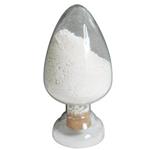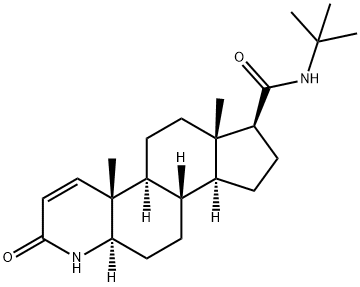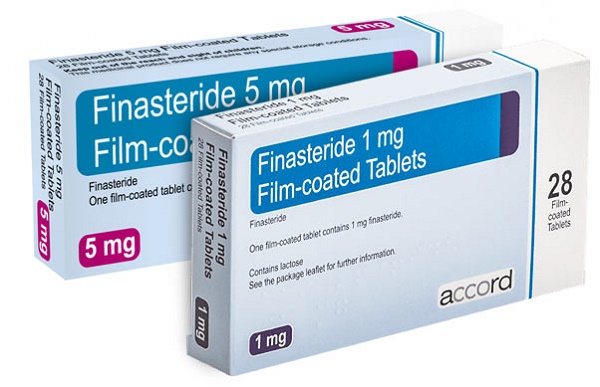What are the differences between Finasteride and minoxidil?
Introduction
Androgenetic alopecia (AGA) is undoubtedly the most common form of hair loss in males. It is a condition which may cause cosmetic and psychosocial problems in androgen-dependent cases. Two out of three guys will experience some form of male pattern baldness by the time they're 35[1].

Finasteride and minoxidil are the two most prominent—and clinically proven—treatments for men's hair loss. Although they both work to achieve the same goal (slowing down hair loss and promoting regrowth), they work in totally different ways.
Finasteride
Finasteride is a prescription drug. It comes as an oral tablet. The condition that Finasteride is used to treat depends on the type of the drug used. Proscar is used to treat the symptoms of an enlarged prostate (benign prostate hyperplasia). It may be used as part of a combination therapy. That means you need to take it with other drugs. It can also be taken with doxazosin to reduce the risk of progression of symptoms of enlarged prostate. In addition, Propecia is used to treat male pattern hair loss.
Finasteride isn't prescribed for use in women or children.
Finasteride works by decreasing the amount of the hormone dihydrotestosterone (DHT) in your body. DHT normally causes your prostate to grow larger. The decrease in DHT helps prevent your prostate from growing larger. It also leads to increased hair growth and decreased hair loss of the hair on your head. Hair growth on other parts of the body isn't affected.
Minoxidil
Minoxidil is a piperidino-pyrimidine derivative, with the following chemical structure: 2,6-diamino-4-piperidinopyrimidine-1-oxide (C9H15N5O). Minoxidil solution (MS) contains inactive ingredients, including water, ethanol, and propylene glycol (PG), which are used as vehicles to enhance the solubility of minoxidil. PG facilitates efficient drug delivery into the hair follicles; however, its frequent induction of local irritation led to developing a PG-free minoxidil foam (MF). The non-medical ingredients in the foam formulation include cetyl alcohol, stearyl alcohol, and butylated hydroxytoluene[2].
Topical minoxidil has been approved by the FDA for the treatment of AGA. Moreover, it has been used as an off-label medication to treat several hair disorders, such as alopecia areata (AA), scarring alopecia, and hair shaft disorders, as well as to improve body hair growth in other areas, including the eyebrows and beard.
Minoxidil could stimulate hair growth. In animal studies, topical minoxidil shortens telogen, causing premature entry of resting hair follicles into anagen, and it probably has a similar action in humans[3]. Minoxidil may also cause prolongation of anagen and increase hair follicle size. Orally administered minoxidil lowers blood pressure by relaxing vascular smooth muscle through the action of its sulphated metabolite, minoxidil sulphate, as an opener of sarcolemmal KATP channels. There is some evidence that the stimulatory effect of minoxidil on hair growth is also due to the opening of potassium channels by minoxidil sulphate. Still, this idea has been difficult to prove, and to date, there has been no clear demonstration that KATP channels are expressed in the hair follicle. Several in vitro effects of minoxidil have been described in monocultures of various skin and hair follicle cell types, including stimulation of cell proliferation, inhibition of collagen synthesis, and stimulation of vascular endothelial growth factor and prostaglandin synthesis. Some or all of these effects may be relevant to hair growth, but the application of results obtained in cell culture studies to the complex biology of the hair follicle is uncertain.
Differences
Minoxidil and finasteride have a few main differences. The most obvious difference at a glance is the format. Minoxidil is available as a topical spray, comes in various strengths, and should be used twice daily. In contrast, Finasteride generally comes as a 1mg tablet to be taken orally, once daily.
Minoxidil doesn't actively stop hair loss; it helps promote new hair to grow faster, fuller, and thicker. Finasteride, on the other hand, helps stop hair loss and promotes new hair growth by blocking the production of dihydrotestosterone (DHT).
References
[1] Ercan Arca. “An open, randomized, comparative study of oral finasteride and 5% topical minoxidil in male androgenetic alopecia.” Dermatology 209 2 (2004): 117–25.
[2] Poonkiat Suchonwanit, Kanchana Leerunyakul, Sasima Thammarucha. “Minoxidil and its use in hair disorders: a review.” Drug Design, Development and Therapy 13 1 (2019): 2777–2786.
[3] A.G. Messenger, J. Rundegren. “Minoxidil: mechanisms of action on hair growth.” British Journal of Dermatology 150 2 (2004): 186–194.
);Related articles And Qustion
See also
Lastest Price from Finasteride manufacturers

US $0.00/KG2024-09-19
- CAS:
- 98319-26-7
- Min. Order:
- 1KG
- Purity:
- ≥98% HPLC
- Supply Ability:
- 1000KG

US $100.00/kg2024-09-19
- CAS:
- 98319-26-7
- Min. Order:
- 1kg
- Purity:
- >99%
- Supply Ability:
- 20tons




